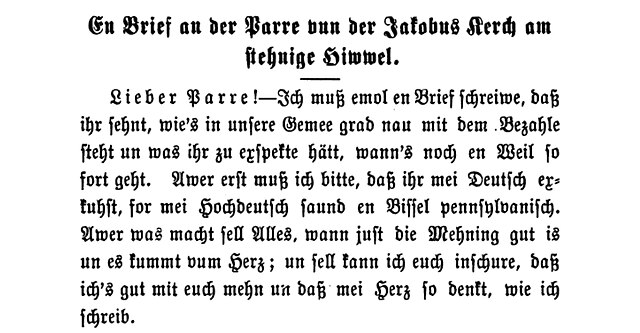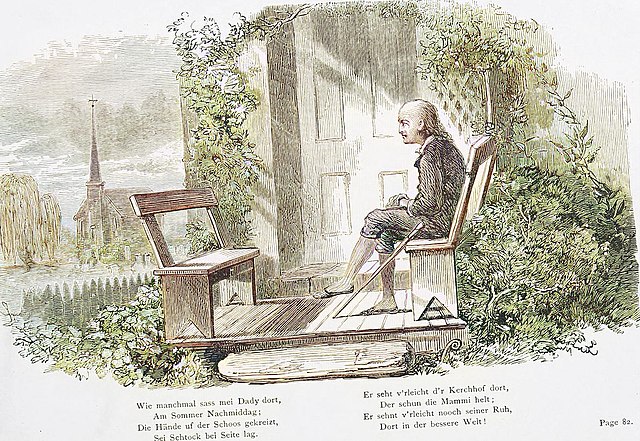Pennsylvania Dutch language
Pennsylvania Dutch, sometimes referred to as Pennsylvania German, is a variation of Palatine German spoken by the Pennsylvania Dutch, including the Amish, Mennonites, Fancy Dutch, and other related groups in the United States and Canada. There are approximately 300,000 native speakers of Pennsylvania Dutch in the United States and Canada.
An example of Pennsylvania High German in Palatine Fraktur: ("...𝖊𝖗𝖘𝖙 𝖒𝖚𝖘𝖘 𝖎𝖈𝖍 𝖇𝖎𝖙𝖙𝖊, 𝖉𝖆𝖘𝖘 𝖎𝖍𝖗 𝖒𝖊𝖎 𝕯𝖊𝖚𝖙𝖘𝖈𝖍 𝖊𝖝𝖐𝖚𝖍𝖘𝖙, 𝖋𝖔𝖗 𝖒𝖊𝖎 𝕳𝖔𝖈𝖍𝖉𝖊𝖚𝖙𝖘𝖈𝖍 𝖘𝖆𝖚𝖓𝖉 𝖊𝖓 𝕭𝖎𝖘𝖘𝖊𝖑 𝖕𝖊𝖓𝖓𝖘𝖞𝖑𝖛𝖆𝖓𝖎𝖘𝖈𝖍."; "...first I must ask, that you excuse my German, for my Hochdeutsch sounds a bit Pennsylvanian.")
Pennsylvania Dutch writer Henry Harbaugh
Lancaster, Pennsylvania in 1845
Pennsylvania Dutch arts history in Pennsylvania Dutch language
The Pennsylvania Dutch, also referred to as Pennsylvania Germans, are an ethnic group in Pennsylvania and other regions of the United States, predominantly in the Mid-Atlantic region of the nation. They largely descend from the Palatinate region of Germany, and settled in Pennsylvania during the 17th, 18th, and 19th centuries. While most were from the Palatinate region of Germany, a lesser number were from other German-speaking areas of Germany and Europe, including Baden-Württemberg, Hesse, Saxony, and Rhineland in Germany, the Netherlands, Switzerland, and the Alsace–Lorraine region of France.
The Flag of Pennsylvania in 1863
Lancaster, Pennsylvania
Actress Hedda Hopper (left) was Pennsylvania Dutch
Many Palatines fled to the Pennsylvania Dutch Country








